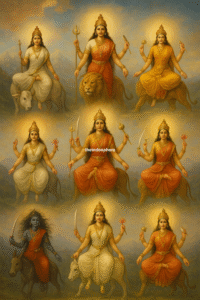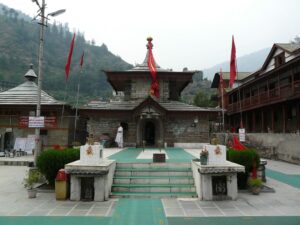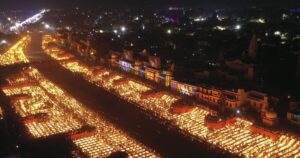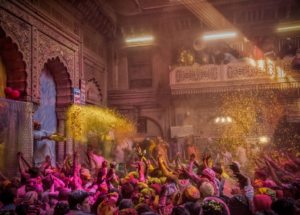
Among the Sindhi community, scattered across India, Pakistan, and the global diaspora, the figure of Jhulelal occupies a central place. He is more than just a deity—Jhulelal represents the soul of Sindh, the power of faith, and the resilience of a people who have endured centuries of upheaval. Venerated primarily by Sindhi Hindus, Jhulelal is revered as an incarnation of Varuna, the god of water, and also as a protector, savior, and unifier of the Sindhi people.
A Savior Born of Water
The legend of Jhulelal begins in the 10th century CE, when Sindhi Hindus faced the oppressive rule of Mirkh Shah, a local tyrant who demanded that they abandon their faith. Fearing for their survival, the community prayed to the Indus River, their lifeline, for deliverance.
Their prayers were answered with the birth of a divine child in Nasirpur—Uderolal, later known as Jhulelal. Miracles surrounded his infancy: the cradle that rocked itself gave him the name “Jhule-lal” (the swinging child). As he grew, his presence was said to radiate authority and compassion in equal measure.
When he confronted Mirkh Shah, Jhulelal did not raise a sword. Instead, he offered a message of peace and coexistence: rulers must govern with justice, and faith should never be forced. Legends say that through divine power and persuasion, he compelled the ruler to abandon persecution. In doing so, Jhulelal became the eternal guardian of the Sindhi people.
The Icon of Water and Wisdom
Jhulelal’s image is instantly recognizable:
- Seated on a golden fish, symbol of the Indus River’s bounty.
- A white-bearded elder, wearing regal robes and a jeweled turban.
- Often depicted holding a rosary, book, and water vessel, each symbolizing devotion, knowledge, and purity.
This connection to water is not incidental. For Sindhis, water is life—provider, preserver, and purifier. Jhulelal, as the incarnation of Varuna, the Vedic god of water, became the perfect symbol of survival in a land where rivers nourished both body and spirit.
Cheti Chand: The Festival of Hope
Every spring, Sindhis around the world celebrate Cheti Chand, the Sindhi New Year and the birth anniversary of Jhulelal. Streets fill with music, color, and processions carrying his image. Devotees gather by rivers, lakes, or seas, offering lighted lamps and sweet rice as prayers of gratitude.
Cheti Chand is more than a festival—it is a cultural homecoming. For a community dispersed across India and the globe after the Partition of 1947, it remains the anchor that ties Sindhis to their ancestral roots.
A Universal Spirit
One of Jhulelal’s enduring qualities is his universality. While Sindhi Hindus revere him as a divine incarnation, many Sindhi Muslims also venerate him under the name Khwaja Khizr, a mystical guide associated with water and eternal life. This shared reverence reflects Sindh’s syncretic culture, where faiths often blended rather than clashed.
In this sense, Jhulelal is not merely a religious figure—he is a bridge across communities, embodying Sindh’s age-old ethos of harmony.
The Diaspora’s Deity
After Partition, millions of Sindhi Hindus fled their homeland, resettling in India and far beyond. Without a state of their own, they carried little more than their language, traditions, and faith. Jhulelal became their anchor in exile.
Temples dedicated to him were built across India, and today they stand in cities from Dubai to London, Toronto to Hong Kong, wherever Sindhis have put down roots. For the diaspora, Jhulelal is not only divine but also cultural—reminding them of their Sindhi heritage, no matter how far from the Indus they may live.
Jhulelal Today
In the 21st century, Jhulelal remains a timeless guardian, celebrated not only in rituals but also in art, literature, and digital media. His story continues to inspire discussions on tolerance, resilience, and identity.
To many, Jhulelal is the cradle that still swings—reminding the Sindhi community that while lands may be lost, traditions endure. He is a reminder that faith, culture, and resilience are rivers that never run dry.





